Arts & Culture

Aymann Ismail has a variety of identities that keep him busy. When I asked him to tell me about himself, he replied, “I’m a journalist, a parent, and a full-time Arab American.” He is also the author of the new memoir, Becoming Baba: Fatherhood, Faith, and Finding Meaning in America.
One of the things I appreciate most about Ismail, who is Muslim, is the way he subtly incorporates reflections on his faith into his writing. In Becoming Baba, Ismail relates how he sat down to read the Quran, only to vehemently disagree with what he read. This led him to explore his doubts and questions, which Becoming Baba explores in an engaging and refreshing way.

Hearing about the news of James Dobson’s death reminded me of a conversation I recently had with my sister while we were making our way to an Ethel Cain concert.
We were conversing as we hurried to the car, excited to profess our love to Willoughby Tucker, and I told my sister she was the only reason I knew about Ethel Cain—whose real name is Hayden Anhedönia. We then indulged in some cynical jokes about the “woke” impulse to cancel Anhedönia because of old social media posts, which she has since apologized for and described as “deeply shameful and embarrassing.”
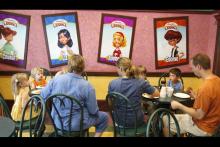
God is not up in heaven thinking up bad things to happen to you. He loves you so much and only wants the best for you. But sometimes that means you have to go through a little bit of pain and heartache. But if you trust him and you love him, he will not let you down.
These words of comfort were given by James Dobson to a young girl in an episode of a Christian radio drama created by his organization. Within these few short sentences, you can find the entirety of Dobson’s ideology: God’s love entangled with the necessity of His punishment.
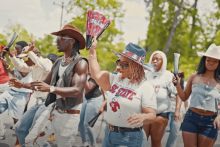
I didn’t expect church to be the place where I learned 803Fresh’s “Boots on the Ground,” the latest line dance taking the nation by storm. The song, which currently has more than 14 million views on YouTube and is known for the refrain, “Where them fans at,” has been danced to by folks like Shaquille O'Neal, Ciara, Kamala Harris, Tina Knowles, and Michelle Obama. And it’s been performed everywhere, from trail rides to graduations, news broadcasts to talk shows. But when people started performing the line dance in church, not everyone was pleased.
“Some of these so call [sic] churches is night 🌙 clubs,” wrote one Facebook user in response to a viral video of a “Boots on the Ground” line dance performance at a small church. “Put them boots on the PASTOR and scoot him out of the church,” another wrote.
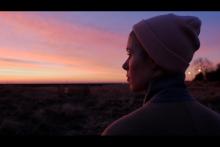
When the House passed President Donald Trump’s Big Beautiful Bill Act, House Speaker Mike Johnson gave glory to God.
Johnson, the Louisiana Republican and Christian, believes that his work and the work of the United States are divinely orchestrated. But if the so-called “Big Beautiful Bill” is truly from God, then what are we to make of cuts that negatively impact the most marginalized in our society?

IT’S BEEN ALMOST a hundred years since God created The Three Stooges, who taught us the first rule of humor: If you can’t make people laugh with a joke, then hit each other over the head with a mallet. According to their cinematic archive, no job was too challenging to fail at spectacularly, including plumber, painter, carpenter, chef, and even surgeon. They could not succeed in these endeavors because they were utterly unqualified, a can’t-do attitude that fits right in with today’s Trump administration. But the good news is, any moment now we should start laughing.
In fact, had Moe, Curly, and Larry lived into their second century, they might have been chosen as members of Robert F. Kennedy Jr.’s new Advisory Committee on Immunization Practices, ACIP for short. Since so many of RFK Jr.’s new hires have been sorely mistaken as respected experts in the field of immunology, why not The Three Stooges, whose disqualifying ineptitude could stand shoulder to shoulder with their own.
The original members of ACIP were summarily dismissed for — as far as we can tell — a strong commitment to scientific inquiry and making fact-based decisions. Also, their surprising aversion to prescribing Vitamin A as a wonder cure. (RFK Jr. is a huge vitamin A fan. He can’t get enough of it. Nor, apparently, can he get enough time in tanning beds despite the proven risk of melanoma. To his credit, RFK Jr. will put up looking tanned and fit against a cancer risk any day.)

More than once I’ve given away
all that was mine except a red pocketknife
and three changes of clothes. Even so
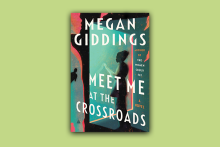
Once, a woman told me the closest thing she had to a religion was speculative fiction. Just as spiritual practices do for many believers, reading Ursula Le Guin and Octavia Butler helped her face the haunting edge of humanity’s knowledge, those parts of being alive that refuse explanation.
It’s this confrontation with mystery that Megan Giddings places at the center of her captivating novel Meet Me at the Crossroads. Seven doors appear around the world, each opening to a beautifully warped alternative dimension. Those who walk through these doors see meadows peppered with gold stones and orange deserts under purple skies — but they don’t always come back. Once people realize that the doors are “uncontrollable, unkillable and unknowable,” most ignore them or call them a hoax, aside from a few fringe religious groups. Woven with plenty of heart, this story is not so much about the nature of the unknown as the complicated ways people cope with it.
In Michigan, twins Ayanna and Olivia grow up near one of the doors, developing contrasting ideas of its meaning. Ayanna lives with their father, who raises her in a marginalized faith community that reveres the door as a divine invitation to embrace mystery. Olivia lives with their mother, a Catholic who rejects her ex-husband’s religion as heretical. Amid the tense family dynamics, the sisters remain close until, upon entering the door as teenagers, Olivia disappears.
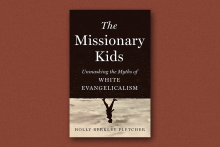
When Holly Berkley Fletcher was a child, she once heard her missionary parents “literally introduced as ‘Super Christians.’” In a white American evangelical culture that idolizes missionaries in this way, how do we speak honestly about the harm missions too often leave in their wake? In Fletcher’s new book The Missionary Kids: Unmasking the Myths of White Evangelicalism (Broadleaf Books), missionaries’ grown children offer a complex and fascinating perspective.
Fletcher—a historian, former CIA analyst, and missionary kid (MK) herself—draws on extensive research, her own experience as an MK, and surveys and interviews with fellow MKs to present a wide-ranging look at MKs’ experiences. Without losing sight of the noble intentions of most missionaries and the good work that many of them do, she pulls back the curtain on the perceived saintliness of missionaries, uncovering an alarming multitude of systemic harms. In doing so, she exposes key myths at the core of white American evangelicalism itself.
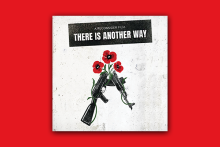
Combatants for Peace
The film There is Another Way profiles former Israeli and Palestinian combatants working toward collective liberation, showing the courage required to break cycles of hatred. “We are strong. We are fierce. But we will not meet them with their violence,” says one activist. Reconsider
The Grit of Incarnation
You Can Trust a God with Scars: Faith (and Doubt) for the Searching Soul presents a Christianity that embraces doubt and a God who understands suffering intimately. Jared Ayers uses art, scripture, music, and literature to explore “the dazzling mystery ... that the Maker stooped to become what had been made.” NavPress
Justice Can Prevail
Geared toward readers ages 8-12, A Sea of Lemon Trees: The Corrido of Roberto Alvarez, by María Dolores Águila, is a lyrical telling of the first successful school desegregation case, Alvarez v. Lemon Grove, two decades before Brown v. Board of Education. Roaring Brook Press

WHEN THE CREDITS rolled for the live-action remake of How to Train Your Dragon, I didn’t expect to think of Catholic theologian G.K. Chesterton. But it makes perfect sense. What better time to remember the words of the “prince of paradox” than during a kid’s movie about a dragon slayer who becomes a dragon friend, all with the backdrop of Iceland’s natural beauty and composer John Powell’s engrossing musical score. The film easily summoned these words from Chesterton’s 1909 essay collection Tremendous Trifles: “The world will never starve for want of wonders; but only for want of wonder.” Beauty and wonders surround us. And if we’re willing to stop and listen, such gifts can dislodge our biases and fears.
The new film focuses on Vikings who live on the isle of Berk, where they fight dragons for survival and space. The socially awkward and soft-spoken Hiccup frequently clashes with his father, Stoick, the Viking leader. Hiccup eschews Berk’s traditional masculine norms; he feels more curiosity than bloodlust toward the dragons. Yet, Hiccup gets his chance to prove his worth when he seems to kill the most feared dragon, Night Fury.
Hiccup is a normal kid: He has crushes, insecurities, and familial angst. Director Dean DeBlois knew Hiccup was joining a long line of powerful but unassuming heroes. “There’s a time-honored tradition of protagonists who are just regular kids but have a transformative bond with something amazing,” Dean told Sojourners, calling to mind Luke Skywalker from Star Wars and Elliott Taylor from E.T. But these seemingly unexceptional heroes are in fact gifted in their capacity for awe.

COLOR HAS LONG fascinated me. I spend days or weeks debating color choices for knitting and art projects. As a kid, I loved mail-order catalogues for their distinctively named palettes. My shelves teemed with books containing facts about color — names for various shades, how ancient pigments were made (crushed insects, plant extracts, and sea snail secretions), and the meanings of colors in different cultures. Highly conscious of racial differences, I found this last topic compelling. I would match my favorite color that week (it changed constantly) to the meanings provided and see where my tastes aligned.
While I recall few details — such as white is a color for mourning in Japan — what I remember, unfailingly, is absence. Each time I enacted this color-play-as-identification, I imagined my way into a past, land, and set of values other than my own. Because, as with most Western maps of world cultures then and now, the cultural diversity of Africa and Afro-diasporic peoples was not represented.
Imani Perry’s latest book shows this absence to be a speaking one.

Like most superhero stories, The Fantastic Four: First Steps is about the end of the world. Early in the film, the ethereal Silver Surfer (Julia Garner) arrives to warn the titular heroes that Galactus (Ralph Ineson), the cosmic being who feeds on planets, will come to eat the Earth. Like all good heroes, the Fantastic Four take action, journeying deep into space to confront Galactus on his spaceship.
Rather than spend time on the usual origin story, First Steps director Matt Shakman and his team of writers throw the viewers directly into the action. Via a television special celebrating the team’s four-year anniversary, we’re introduced to the Fantastic Four and the retro-futuristic 1960s alternate reality where they live.

The Fantastic Four: First Steps starts out with a trade proposal of the highest stakes. Galactus, the world-eating villain of Marvel’s latest reboot, will spare the Earth from his insatiable hunger in exchange for one child.
The child on the cosmic bargaining table is Franklin, son of Reed Richards, aka “Mister Fantastic” (a subdued Pedro Pascal) and Sue Storm, aka “The Invisible Woman” (Vanessa Kirby, who really gets to shine as the Fantastic Four’s leader).

In 2022, Dua Lipa appeared as a guest on The Late Show with Stephen Colbert, and asked him about the role his faith plays in his work.
“Does your faith and your comedy ever overlap?” she asked. “And does one ever win out?”
Colbert first offers a little quip (“I think, ultimately, us all being mortal, the faith will win out in the end”) and then launches into a lengthy and eloquent treatise on how Catholic teaching has trained him to wield humor as a defense against despair.

You can add Nathan Evans Fox to the list of artists who are in the country music scene without entirely being of it. Or maybe it’s better to say Fox is operating in a purer, livelier stratosphere of country music that neither needs nor wants the approval of the Nashville ruling class. So far, he’s doing just fine. His “Hillbilly Hymn (Okra and Cigarettes)” made a viral splash; a rich tune in the tradition of old Appalachian spirituals that envisions a cop-free Heaven where “the rich get scared” and “the guns are all for shootin’ clays.”

Some may want me to stay quiet, but I want to be loud. I want to scream. I want to cry. I want to embrace the full spectrum of my humanity, the same way that author Austin Channing Brown has learned to embrace herself. In her upcoming book, Full of Myself: Black Womanhood and the Journey to Self-Possession, she details this journey.

If asked to pick one Lady Gaga song to encapsulate who she is and what she stands for, you’d be hard pressed to come up with a better choice than “Born This Way.” Released in 2011, the song is a vibrant, full-body dance anthem that calls on listeners to celebrate who they are. “God makes no mistakes,” she sings in the refrain. “I’m on the right track, baby / I was born this way.” The song was immediately embraced upon release, particularly by the LGBTQ+ community.
As it turns out, this wasn’t the first time a song by that name made that kind of impact. In 1977, Motown Records released the disco anthem “I Was Born This Way,” an upbeat tune featuring a largely unknown Black gospel singer who responds to critics with a refrain that was a head-turner for its time: “I’m happy. I’m carefree. And I’m gay. I was born this way.”

Superman has always reminded me of Jesus.
In director James Gunn’s latest interpretation, Superman, Clark Kent is once again the heroic savior — thrust into battles against villainous forces and multi-dimensional threats. But this time, the stakes are political.

Released five years ago, Kristin Kobes Du Mez’s Jesus and John Wayne: How White Evangelicals Corrupted a Faith and Fractured a Nation is no orindary history book. Since it published, the treatise on militant Christian masculinity has shaped conversations about Trumpism in both Christian and secular spaces. A surprise New York Times bestseller, the book resonated with many readers who found that it clarified their own experiences of growing up in the American evangelical subculture — and it drew criticism from others who found it to be an unfair takedown of conservative Christianity.
Now, it has a theme song.